node.js supports import syntax. It is a simple knowledge point, but it can remind us to get out of knowledge misunderstandings, pay more attention to the outside world of knowledge, and constantly open up the boundaries of our own knowledge.

js modularization
The mainstream front-end modularization specifications currently include the following:
- CommonJS, the specification proposed by Node.js
- ECMAScript Module, ESM, the JavaScript standard specification proposed by the ECMAScript organization
- The ones that have been eliminated are: CMD, AMD, etc., and then the complex UMD ( Supports a collection of various specifications)
Therefore, there are two mainstream specifications CommonJS and ESM, but because Node.js does not support ESM Standards often lead to the coexistence of two standard codes in our projects, resulting in the following situation:
// 在node端执行构建的时候 const _ = require('loadsh') // 在浏览器端实现的时候 import _ from 'loadsh';
In this way, pain points are easy to occur in development, and often our solutions The solution is to use various construction tools to solve the problem, such as: webpack vite. Especially when we write node.js compilation scripts in projects, we often need to switch. [Related tutorial recommendations: nodejs video tutorial, Programming teaching]
But after the Node.js V14 version, it begins to support the ESM specification. You can directly Syntax such as import export is used in Node.js. I have finally waited for this day?
PS: In fact, this feature has been added as early as Node.js V8.5 version, but it has always been necessary to turn on this feature through the global variable –experimental-modules, because it is not Stability is not turned on in most projects, but since 16, we can boldly use it in projects, but some old projects recommend not turning it on for the time being.
How to use
Let’s first read the relevant instructions from the official website:
Through the above we can know several usage methods:Node.js has two module specifications:
CommonJSModule Specification andECMAScriptModule Specification Developers can settype=moduleornode xxx.js --input-type# through the.mjsfile extension,package.jsonThe ## flag tells Node.js to use theECMAScriptspecification to execute code. Without these settings, Node.js will useCommonJSfor execution.Node.js Modules: ECMAScript modules
- Change the file suffix to
.mjs
, when node.js is loaded, it will automatically useESMspecification - in the project
package.json
Add a new configuration item"type":"module", then all .js files in the entire project will be executed in accordance with theESMspecifications - Adding execution parameters
--input-type
can also achieve the same effect
Various usage methods
1. Conventional method:import _ from 'lodash';
import { readFile } from 'fs';
import Demo from './Demo.mjs'; // 绝对路径或相对路径都可以
export readFile;
export default readFile;2. Use with parameters: // 由于参数不同, 这个会让`foo.mjs`被加载两次,而不会利用缓存中的`foo.mjs` import './foo.mjs?query=1'; // loads ./foo.mjs with query of "?query=1" import './foo.mjs?query=2'; // loads ./foo.mjs with query of "?query=2"3. Support
data: format URL form
import 'data:text/javascript,console.log("hello!");'; // text/javascript 会将后面的内容当成js模块
import { test } from 'data:text/javascript,function test(){console.log("test")};export {test};'; // 这里我们是不是扩宽思路,直接加载在线js呢?
import _ from 'data:application/json,"world!"' assert { type: 'json' }; // application/json 则是json
// application/wasm for Wasm4, assert assertion (experimental feature)
Force the file to be loaded into a certain format, such as: json javascript webassembly, etc.
import fooData from './foo.json' assert { type: 'json' };5. Load commonjs specification moduleOf course, it also supports loading commonjs standard modules. The usage is as follows:
import { default as cjs } from 'cjs'; // module.exports 导出
import cjsSugar from 'cjs'; // module.exports
import * as m from 'cjs';6. import() asynchronous import
This kind of usage is very normal. It does not need to be loaded in real time. It will be loaded when it is needed.const { default: barData } =
await import('./bar.json', { assert: { type: 'json' } });7. Supports introduction from http/https (experimental feature)It is currently an experimental feature. Restrictions, such as:
- Does not support http2/3 protocol
- http protocol can only be used for local IP addresses such as 127.0.0.1
- Cookie, Authorization and other information are not Will be carried and sent
- Only the js file of the remote end will be loaded and executed, and other dependent files in the remote end will not be loaded
import worker_threads from 'node:worker_threads'; import { configure, resize } from 'https://example.com/imagelib.mjs'; configure({ worker_threads });
Restrictions
The only restriction: when the ESM specification is turned on, you are only allowed to fill inimport or export, and you are not allowed to use require or module.exports, will report an error:
const a = require('a')
^
ReferenceError: require is not defined in ES module scope, you can use import instead
at file:///Users/borfyqiu/Desktop/study/github/qiubohong.github.io/code/demo-rollup/test.mjs:4:12
at ModuleJob.run (node:internal/modules/esm/module_job:193:25)
at async Promise.all (index 0)
at async ESMLoader.import (node:internal/modules/esm/loader:530:24)
at async loadESM (node:internal/process/esm_loader:91:5)
at async handleMainPromise (node:internal/modules/run_main:65:12)
Summary
In fact, this is not a popular knowledge, as long as you have done a little bit of Node.js Keep paying attention and you can basically learn about this feature. But as someone who doesn’t pay attention, it’s easy to fall into your own misunderstanding of knowledge. You will always think that Node.js does not support the ESM specification, and even complain about why Node.js does not support it? So here is a sentence that you need to remind yourself - [There is no road in the book mountain, and diligence is the path, and there is no limit to the sea of learning, and the boat is the boat]. For more node-related knowledge, please visit:nodejs tutorial!
The above is the detailed content of A brief analysis of how to use import syntax in node. For more information, please follow other related articles on the PHP Chinese website!
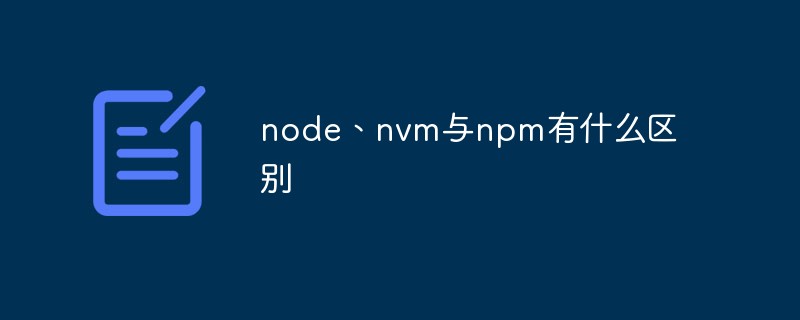 node、nvm与npm有什么区别Jul 04, 2022 pm 04:24 PM
node、nvm与npm有什么区别Jul 04, 2022 pm 04:24 PMnode、nvm与npm的区别:1、nodejs是项目开发时所需要的代码库,nvm是nodejs版本管理工具,npm是nodejs包管理工具;2、nodejs能够使得javascript能够脱离浏览器运行,nvm能够管理nodejs和npm的版本,npm能够管理nodejs的第三方插件。
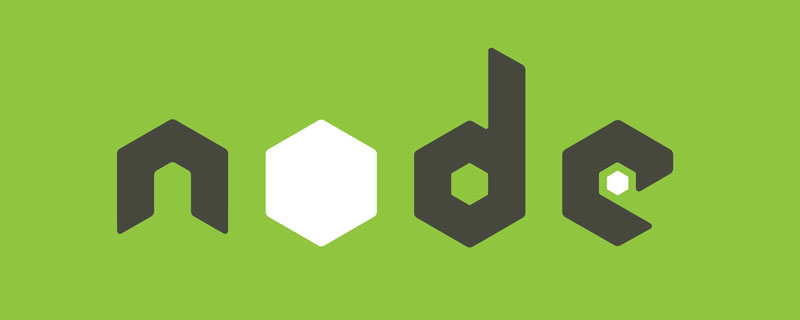 Vercel是什么?怎么部署Node服务?May 07, 2022 pm 09:34 PM
Vercel是什么?怎么部署Node服务?May 07, 2022 pm 09:34 PMVercel是什么?本篇文章带大家了解一下Vercel,并介绍一下在Vercel中部署 Node 服务的方法,希望对大家有所帮助!
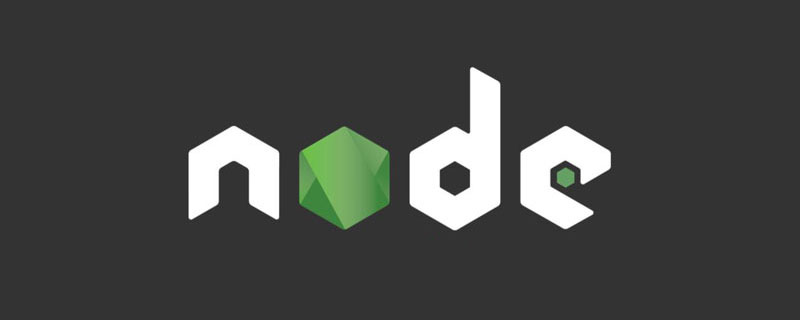 node爬取数据实例:聊聊怎么抓取小说章节May 02, 2022 am 10:00 AM
node爬取数据实例:聊聊怎么抓取小说章节May 02, 2022 am 10:00 AMnode怎么爬取数据?下面本篇文章给大家分享一个node爬虫实例,聊聊利用node抓取小说章节的方法,希望对大家有所帮助!
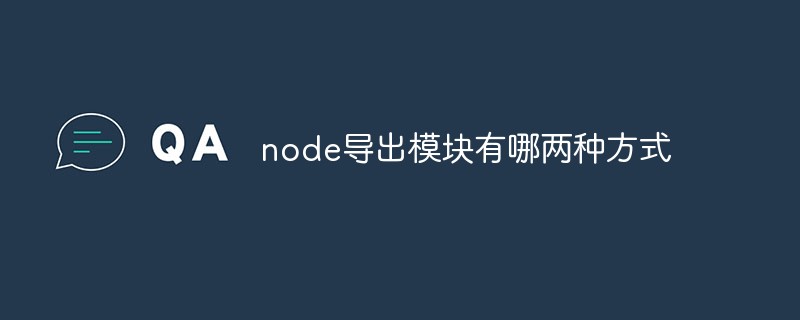 node导出模块有哪两种方式Apr 22, 2022 pm 02:57 PM
node导出模块有哪两种方式Apr 22, 2022 pm 02:57 PMnode导出模块的两种方式:1、利用exports,该方法可以通过添加属性的方式导出,并且可以导出多个成员;2、利用“module.exports”,该方法可以直接通过为“module.exports”赋值的方式导出模块,只能导出单个成员。
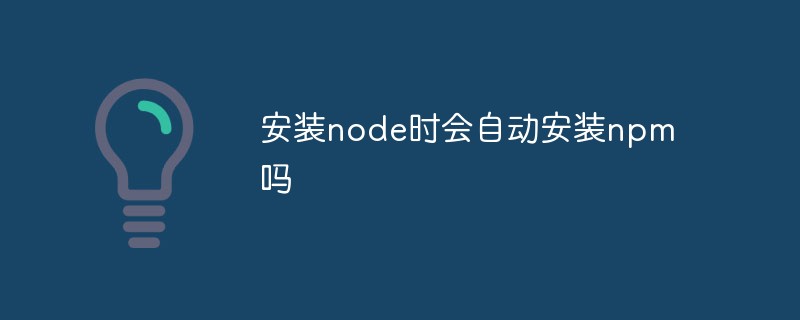 安装node时会自动安装npm吗Apr 27, 2022 pm 03:51 PM
安装node时会自动安装npm吗Apr 27, 2022 pm 03:51 PM安装node时会自动安装npm;npm是nodejs平台默认的包管理工具,新版本的nodejs已经集成了npm,所以npm会随同nodejs一起安装,安装完成后可以利用“npm -v”命令查看是否安装成功。
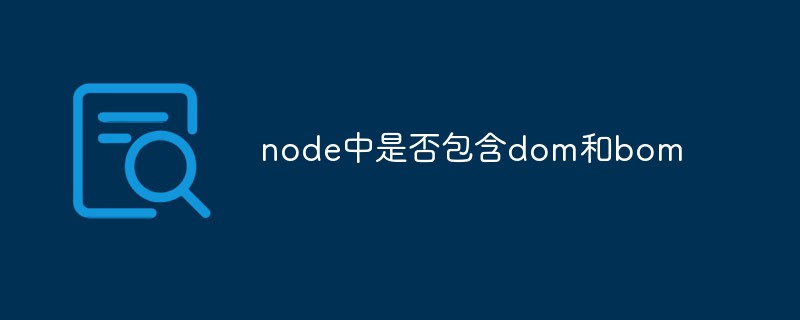 node中是否包含dom和bomJul 06, 2022 am 10:19 AM
node中是否包含dom和bomJul 06, 2022 am 10:19 AMnode中没有包含dom和bom;bom是指浏览器对象模型,bom是指文档对象模型,而node中采用ecmascript进行编码,并且没有浏览器也没有文档,是JavaScript运行在后端的环境平台,因此node中没有包含dom和bom。
 聊聊Node.js path模块中的常用工具函数Jun 08, 2022 pm 05:37 PM
聊聊Node.js path模块中的常用工具函数Jun 08, 2022 pm 05:37 PM本篇文章带大家聊聊Node.js中的path模块,介绍一下path的常见使用场景、执行机制,以及常用工具函数,希望对大家有所帮助!


Hot AI Tools

Undresser.AI Undress
AI-powered app for creating realistic nude photos

AI Clothes Remover
Online AI tool for removing clothes from photos.

Undress AI Tool
Undress images for free

Clothoff.io
AI clothes remover

AI Hentai Generator
Generate AI Hentai for free.

Hot Article

Hot Tools

mPDF
mPDF is a PHP library that can generate PDF files from UTF-8 encoded HTML. The original author, Ian Back, wrote mPDF to output PDF files "on the fly" from his website and handle different languages. It is slower than original scripts like HTML2FPDF and produces larger files when using Unicode fonts, but supports CSS styles etc. and has a lot of enhancements. Supports almost all languages, including RTL (Arabic and Hebrew) and CJK (Chinese, Japanese and Korean). Supports nested block-level elements (such as P, DIV),

Notepad++7.3.1
Easy-to-use and free code editor

SAP NetWeaver Server Adapter for Eclipse
Integrate Eclipse with SAP NetWeaver application server.

VSCode Windows 64-bit Download
A free and powerful IDE editor launched by Microsoft

DVWA
Damn Vulnerable Web App (DVWA) is a PHP/MySQL web application that is very vulnerable. Its main goals are to be an aid for security professionals to test their skills and tools in a legal environment, to help web developers better understand the process of securing web applications, and to help teachers/students teach/learn in a classroom environment Web application security. The goal of DVWA is to practice some of the most common web vulnerabilities through a simple and straightforward interface, with varying degrees of difficulty. Please note that this software








